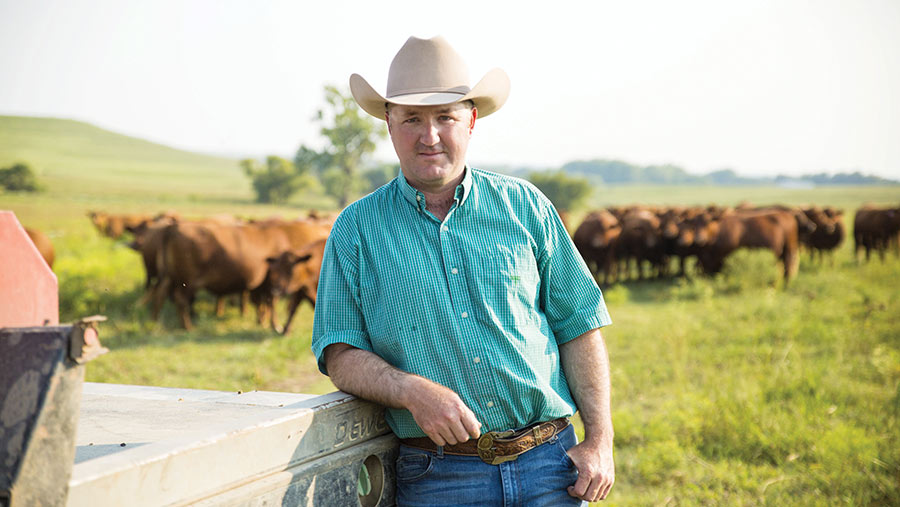Farmer Focus: Beef processors are creating a producer rift
 © Kandace Griffin
© Kandace Griffin Once again, it feels like a summer of extremes. On the ranch, we have finally finished up spring breeding and hay making.
It has been a hard push since February and now we have two bulls eating out of a hay ring with everything else out to pasture.
Combined with taking the children fishing, visiting Kansas City with my friends, and starting days an hour later, it all feels great.
However, the cattle market is a hornet’s nest. There was an official hearing before the US Senate this week.
It’s a very complex issue but boils down to two things – processor concentration and market access. Four processors now control 85% of the US market.
This system has been marred by plant fires, Covid-19 and even Russian hackers. Without market competition, the processors have learned that if they screw up, they can pass on costs to producers and consumers and see a better margin.
See also: US poultry processor to pay $75m in civil price-fixing claim
How they procure cattle is divisive. There is the “typical” cash market, but also alternative marketing agreements (AMAs) that happen outside the typical price negotiation.
Most popular are our grid systems, where the producer sells carcasses and not animals. Premiums are paid for higher-quality carcasses and it has forced a great deal of innovation.
However, they have become a victim of their own success, and so many cattle are going down this route that we are starting to have a hard time establishing a fair price for them all.
Base price
More commonly, the good cattle go on grids and the bad cattle sell in the cash, which simply establishes the base price at a lower level.
Large feedyards started negotiating their own AMAs that provided quantity as opposed to quality. As the “black swan” events piled up last year, the processors found they had enough cattle under agreements to stop buying cattle in the other way.
It has led to beef producer civil war. The “haves” have an agreement that means they will get their cattle gone and stay solvent and profitable, while their neighbour “have nots” can’t sell at any price and are going broke.
Social media, Covid anxiety, and the Trump era have not helped. It is nasty and personal. Time will tell who wins and who loses.

